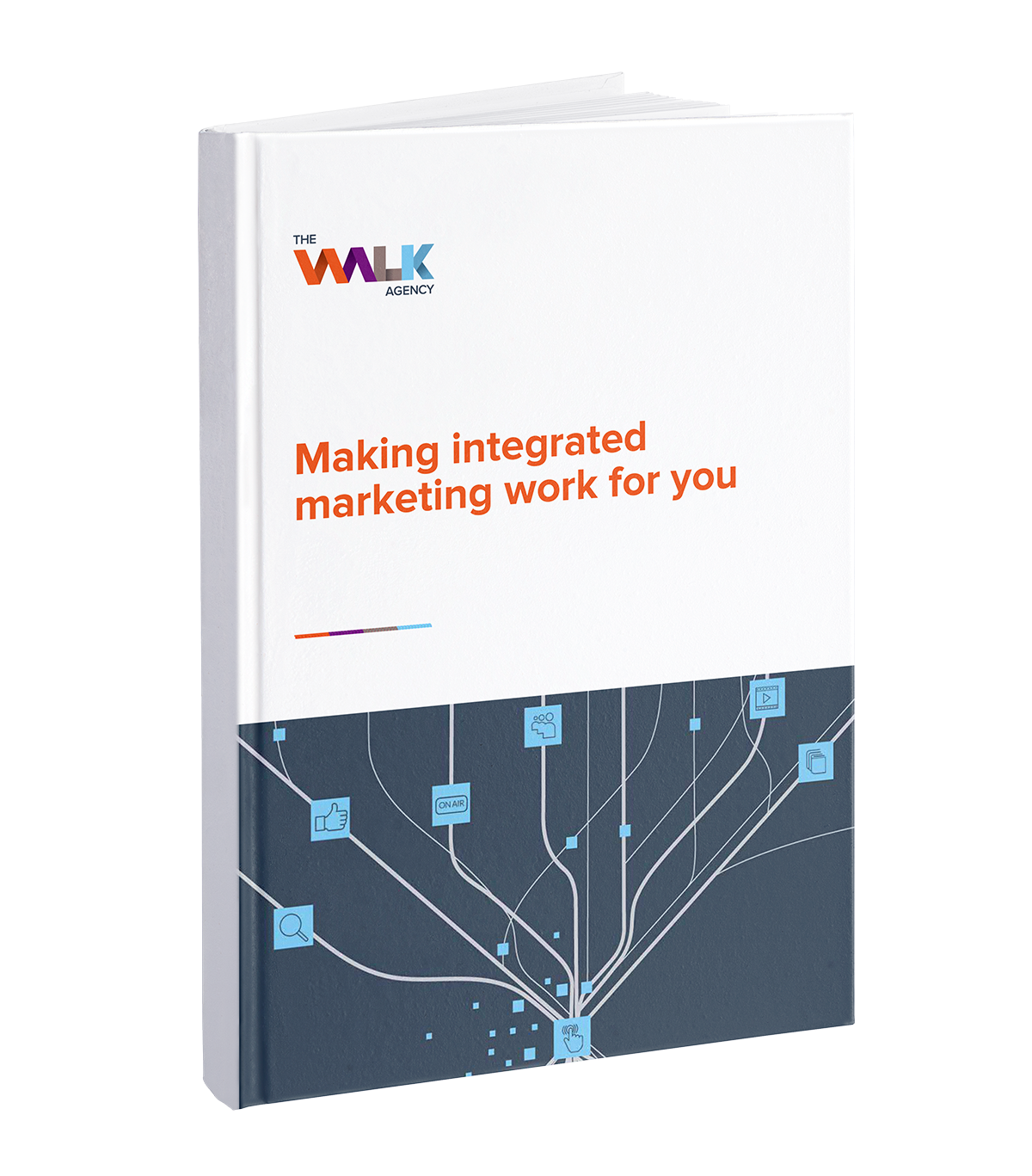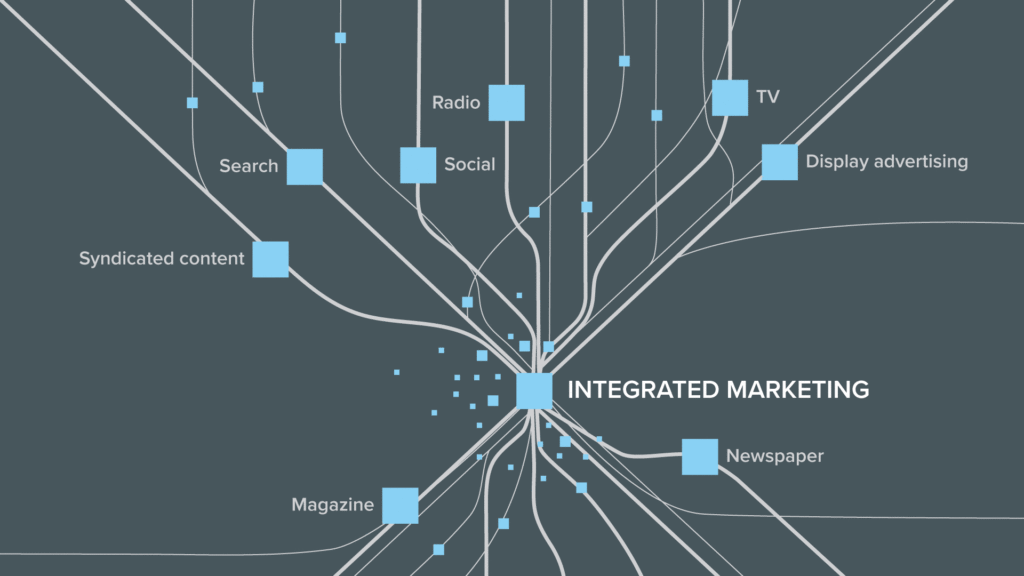Now, you may think that leveraging AI in conjunction with marketing is a high-level endeavour only pursued by big name companies, but that’s simply not true. In this article, we’ll show you how easy it is to integrate into your next campaign.
Okay, so Artificial Intelligence (AI) hasn’t risen to the same level as Isaac Asimov predicted*. We don’t have robot butlers, for a start. However, we are at a point where AI can:
- Improve your marketing efforts and run highly targeted campaigns
- Add value to your content
- Identify trends which will determine the impact you make on your customers new and old!
That’s something, right? Let’s take a closer look at the kinds of AI you can leverage in your marketing.
First and Third-Party Information

Like every successful journey, you’re going to need to take that first step. The first step being the collection of first party information – the behaviour and actions of your current customer base – to gain a better understanding of what they want from your brand, products and services.
This golden information – including sales, customer demographics, ad impressions, and website interactions – is the bedrock of an integrated marketing campaign. This step will help you focus and sharpen your goals, gain audience insights and personalise your content to retain even more loyal customers. You can also gather this kind of information from offline sources, such as customer feedback and completed surveys, to discover how your marketing campaign is holding out.
But stay focused! Before you wade into all that data, you’re going to need a clear idea of what you want to know about your customers and how it’ll benefit you and your campaign. Did your last ten consumers come from them seeing your most recent billboard or because you did a recent email-out? That’s need to know stuff.
You can bolster this prized information with a dash of third-party information. Whispered as the dark arts in some corners, the truth is the right kind of third-party information can help you realise the scope of your potential customer base, help you discover new audiences and help your targets become more precise. Just make sure that you know what kind of third-party data you’re buying and where it has come from. After all, not every scrap of third-party information is knowingly provided by someone through online forms.
Predicting your customer’s behaviour

Analysing past behaviour not only gives you a better picture of your existent customers, it gives you a better understanding of how to create a more personalised connection with them. Through leveraging AI and first-party data, you elevate your marketing campaigns, and take your activity beyond just digital, creating a truly integrated experience for your existent and future customers.
Take a look at dynamic pricing for example
You’ll be familiar with dynamic pricing from using apps such as Uber. The football has just finished, the heavens have opened, and everyone is scrambling for a taxi. That’s when the ‘surge’ charge kicks in and Uber takes advantage of supply and demand. It can be a frustrating experience for the customer, and some will feel like they’re being taken advantage of. However, there is the potential to use dynamic pricing for the ‘greater good’ of your customers.
With dynamic pricing, you can look at your customers’ data trail and use it to predict what they’re willing to pay for your service and make them offers and discounts to reignite their interest.
Chatbots

It’s 2am, a potential customer is browsing your site, looking for a service just like yours, but your customer support is closed till the following morning. End result: they’ve gone elsewhere.
However, by setting up a chatbot on your site, your new and existing customers can interact with your company to find out the type of information they want when they want to. Used by brands ranging from a small local financial firm to companies such as Amazon and The Wall Street Journal, Chatbots simulate a live chat experience which hides the next step of the question answering system and can be as in-depth as you want them to be. If a customer can’t get the information they want through your bot, or they simply need more information than it can provide, then they can be given an email address or online form, which will be directed to a real person who can contact them the following day.
Cultivating a stellar presence on social media
We’re all connected to social media and it’s become one of the fundamental tools of marketing. If you have a Facebook or a LinkedIn page for your business, and the right kind of data management plan, AI can give your business an insight into what type of content people engage with more and what types of people they are, e.g. travellers vs marketers vs CEOs and so on.
This data will help you plan your future activity and how to best reach these people, for example via content syndication, mail-out or an email campaign to name a few. You can also find out what is being said about your brand, focussing on keywords and phrases. Filtering out spam and other nuisance posts, you’ll be presented with useful insights you can filter into your current or future campaigns.
Post-purchase nurture

Support for a customer after they’ve interacted with your business is just as important, if not more so, than the completion of your service itself. Periodicals, such as Forbes**, have long championed the idea that consumers genuinely value a long-term relationship with their brands.
If you’re not already doing so, make sure you follow up on your service to learn more about the customer’s experience. The follow up could be done through something as simple as a phone call, questionnaire, or a myriad of other options leveraging automation techniques.
The value of setting something up once, which can be replicated autonomously, is not to be underestimated these days. And of course, when we’re talking about leveraging AI as part of the solution, this can really deliver results – both in terms of engagement and time savings. As well as identifying potential gaps you need to cover, you can also use this as an opportunity to find out why a customer came to you initially and what made them ultimately stay with you.
If you leverage automation through AI, this information can help tailor future correspondence with your valuable customers and how to best to engage them. For example, Amazon follows up via email to cross and upsell their products with recommendations based upon the trail customers leave on their site. Think about how your customers would respond to the same communication, or is a good old mail out to get them knocking down your door that would work best?
You can also tempt one-time customers to return by re-engaging with them and presenting them with an offer, such as an exclusive event invitation, or access to a special product or service. If they take advantage of your kind offer, whether provided by an SMS, letter or an email, this information can deliver valuable insights as you analyse your data and retain it for future marketing. Couple this with analysing your own data, including social media, first party information and chatbot interactions, you’ll be able to put yourself in a better position to respond to potential issues customers could have in the future.
This could well be the key difference between losing a customer and gaining one for life.
Final word…
It doesn’t hurt to remember that retaining consumers is just as important as welcoming new ones into the fold. Five times as important in fact, with estimates suggesting it’ll cost you 5 times more to acquire a new customer than it is to retain the one you already have*. And whilst you may feel you currently don’t have the reach and customer base of the likes of Amazon and Google, if you’re willing to put yourself out there and embrace leveraging AI into your campaigns, then you’ll quickly be on your way to providing your consumers with a more personalised and integrated experience, simply through investing in the process. Plus, you’ll soon start to see a range of additional benefits come from this, including more leads and sales.
* Source – www.forbes.com/sites/charlestowersclark/2019/01/08/isaac-asimovs-predictions-for-2019-how-accurate-was-the-three-laws-of-robotics-creator
** Source – www.forbes.com/sites/forbesagencycouncil/2018/10/25/build-lasting-relationships-with-customers-using-these-13-tactics
^ Source – www.invespcro.com/blog/customer-acquisition-retention




